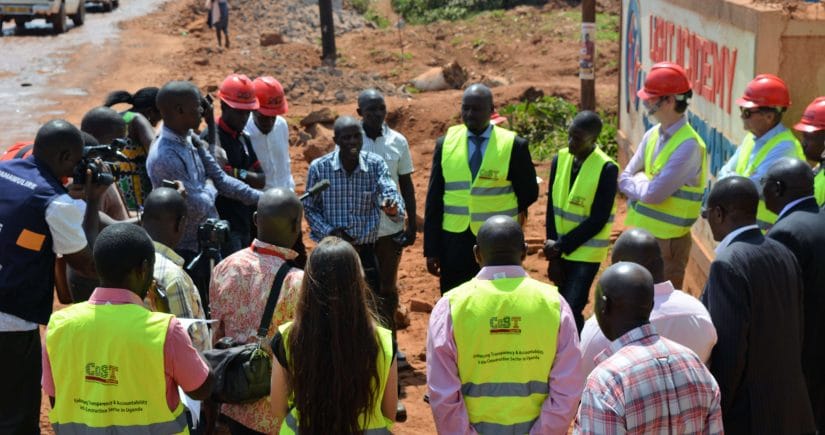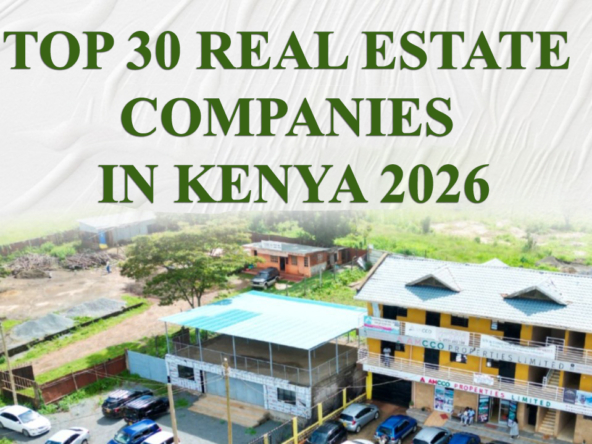Infrastructure development stands as an unparalleled primary driver of real estate value across Uganda. It’s a fundamental truth that improved connectivity and access to essential services directly translate into burgeoning land appreciation and dynamic new development opportunities. Major road projects, significant power grid upgrades, and strategic transit initiatives are profoundly reshaping land use patterns and investment landscapes, particularly along critical corridors such as the Kampala–Jinja Expressway, the Kampala–Masaka Road, and the pivotal Kampala Northern Bypass. This surge in infrastructure investment is unleashing the untapped potential of Uganda Infrastructure Real Estate, creating new economic hubs and transforming the urban fabric.
Catalyzing Growth: Key Infrastructure Projects Reshaping Real Estate
Several landmark infrastructure projects have been instrumental in igniting the current boom in Uganda Infrastructure Real Estate, each contributing uniquely to enhanced accessibility and economic viability.
Kampala–Jinja Expressway: Turbocharging Eastern Growth
The completion of Phase I of the Kampala–Jinja Expressway in 2022 marked a monumental achievement, dramatically transforming the eastern corridor and invigorating Uganda Infrastructure Real Estate. This vital artery has slashed travel times between Kampala and Jinja by a remarkable 40%. The impact on land values along this corridor has been immediate and profound, catalyzing land price increases of an astounding 30–50% for parcels situated within a 5-kilometer radius of key interchanges in burgeoning towns like Njeru and Namagunga. This expressway doesn’t just connect cities; it unlocks vast areas for residential, commercial, and industrial development, making properties along its route highly sought-after. The reduced commute times also encourage urban spillover, attracting more residents and businesses to previously less accessible areas, thereby further fueling the land appreciation within Uganda Infrastructure Real Estate.
Kampala Northern Bypass & Connector: Gateway to Opportunity
The Kampala Northern Bypass, further enhanced by the opening of its Connector in 2023, has played a critical role in redefining access to vital economic zones, particularly the Entebbe International Airport and its surrounding areas. This strategic bypass has significantly improved connectivity to areas like Mpala, Kajjansi, and Gayaza, which were previously burdened by severe traffic congestion when accessing the airport or other parts of Kampala. The enhanced accessibility has directly spurred demand for both residential and industrial land along its route. Businesses benefit from streamlined logistics and reduced transport costs, while residents enjoy quicker commutes to workplaces and amenities. This improved arterial network solidifies the investment appeal of Uganda Infrastructure Real Estate in these areas, making them prime targets for both housing and manufacturing developments.
Power Transmission Upgrades: Fueling Industrial Ambitions
Reliable and abundant power supply is a non-negotiable for large-scale development and industrial growth. The significant power transmission upgrades, notably the expansion of the 400 kV Karuma–Bujagali line, have been pivotal in stabilizing electricity supply across central Uganda. This consistent and robust power availability is a game-changer for the Uganda Infrastructure Real Estate sector, particularly for developers targeting mid-scale manufacturing facilities and crucial data center developments. Businesses are more willing to invest in new locations when assured of uninterrupted power, reducing operational risks and costs. This stability not only supports existing industries but also attracts new ventures, leading to the development of industrial parks and specialized zones, and thus driving demand for strategically located land.
Navigating the Terrain: Key Challenges in Infrastructure Development
Despite the immense benefits, infrastructure projects in Uganda face persistent challenges that require careful navigation from all stakeholders in Uganda Infrastructure Real Estate.
Land Compensation & Resettlement: A Complex Hurdle
One of the most persistent and sensitive challenges in Uganda Infrastructure Real Estate development is the intricate process of land compensation and resettlement. Delays in fund disbursement to affected landowners, coupled with frequent valuation disputes, have historically led to significant project slowdowns and, at times, community protests. On average, compensation processes can drag on for 6 to 12 months, adding substantial time and cost to project timelines. These delays not only impact construction schedules but also generate negative publicity and erode public trust. Ensuring fair, timely, and transparent compensation is crucial for fostering goodwill and accelerating infrastructure projects that underpin the growth of Uganda Infrastructure Real Estate.
Regulatory Coordination: Bridging Silos for Efficiency
The fragmented nature of regulatory coordination poses another considerable challenge to Uganda Infrastructure Real Estate. Multiple government agencies, including the Uganda National Roads Authority (UNRA), the Ministry of Lands, Housing and Urban Development, and various district councils, often operate in silos. This lack of integrated planning and communication can lead to inconsistent policy implementation, bureaucratic redundancies, and prolonged approval processes for projects. Streamlining inter-agency communication, establishing clear jurisdictional boundaries, and implementing unified regulatory frameworks are essential steps towards creating a more efficient and predictable environment for infrastructure development, ultimately benefiting the entire Uganda Infrastructure Real Estate ecosystem.
Environmental Concerns: Balancing Development with Ecology
The rapid pace of infrastructure expansion often comes with environmental consequences, sparking considerable concern within the Uganda Infrastructure Real Estate sector. Road expansions, in particular, have regrettably encroached upon ecologically sensitive wetlands, leading to interventions from the National Environment Management Authority (NEMA) and temporary construction halts. These incidents highlight the critical need for comprehensive environmental impact assessments (EIAs) and stricter adherence to environmental protection guidelines throughout the planning and execution phases of infrastructure projects. Balancing the imperative for development with the equally important need for ecological preservation is vital for sustainable growth and for maintaining the long-term viability of Uganda Infrastructure Real Estate.
Driving Progress: Private Sector and Public Collaboration
The synergistic relationship between the private and public sectors is proving instrumental in overcoming challenges and maximizing the benefits of infrastructure development for Uganda Infrastructure Real Estate.
Stakeholder Engagement Models: Fostering Dialogue
Recognizing the complexities of large-scale projects, the Ministry of Works and Transport has wisely instituted Quarterly Infrastructure Forums. These regular gatherings bring together all key stakeholders: affected communities, project contractors, and potential investors. The forums serve as vital platforms for open dialogue, allowing for the streamlined resolution of compensation issues, transparent discussions about project progress, and the timely addressing of grievances. By fostering direct communication and mutual understanding, these engagement models build trust, reduce potential conflicts, and significantly expedite the execution of infrastructure projects crucial for Uganda Infrastructure Real Estate.
Integrated Land Banking: Strategic Pre-Acquisition
Forward-thinking developers are adopting integrated land banking strategies along planned infrastructure corridors. Companies like Rwenzori Estates proactively pre-acquire large parcels of land, positioning themselves to capitalize on future appreciation. A key element of this strategy involves negotiating upfront community infrastructure contributions in lieu of higher future land prices. This means developers might fund local roads, schools, or clinics as part of the land deal, which benefits both the community and the developer by fostering good relations and securing land at favorable rates before prices skyrocket due to infrastructure completion. This symbiotic approach is a smart way to manage costs and integrate projects into communities, benefiting Uganda Infrastructure Real Estate.
Green Infrastructure Financing: Sustainable Development
To ensure that development is sustainable and responsible, there’s a growing trend of partnerships with multilateral lenders such as the African Development Bank (AfDB) and the World Bank for green infrastructure financing. These financial arrangements often come with strict environmental safeguards and robust community development clauses. This ensures that projects not only deliver economic benefits but also minimize ecological impact and contribute positively to local communities through initiatives like job creation and social amenities. Such partnerships provide the necessary capital while embedding sustainability at the core of infrastructure projects, ultimately ensuring the long-term health and value creation within Uganda Infrastructure Real Estate.
Astute Investor Implications: Seizing Opportunities, Managing Risks
For investors seeking to capitalize on the dynamic landscape of Uganda Infrastructure Real Estate, a clear understanding of both the opportunities and the associated risks is paramount.
Appreciation Opportunities: The Early Bird Advantage
The current trajectory of Uganda Infrastructure Real Estate presents compelling appreciation opportunities. Land value along newly improved or planned corridors is projected to grow by an impressive 20–30% annually for the next five years. This offers substantial capital gains for investors who engage in early acquisitions. Identifying these strategic corridors before full development takes hold allows investors to purchase land at lower entry points, positioning them for significant returns as infrastructure projects progress and connectivity enhances demand. This makes early investment in well-researched areas a highly lucrative strategy.
Risk Factors: Budgeting for Mitigation
While the rewards are high, investors must be acutely aware of inherent risk factors in Uganda Infrastructure Real Estate. These include navigating potentially lengthy land compensation timelines, engaging in complex valuation disputes, and ensuring strict environmental compliance. It is prudent to budget an additional 10–15% of the total land acquisition costs specifically for stakeholder engagement and mitigation efforts. This allocation covers legal fees, community outreach, and any unforeseen costs associated with managing land-related complexities, helping to de-risk investments and ensure smoother project execution.
Collaborative Models: Unlocking Shared Benefits
Participating in public-private infrastructure initiatives can unlock a host of additional benefits for investors in Uganda Infrastructure Real Estate. Such collaborative models may offer enticing incentives like tax breaks, priority access to strategic land parcels, and even shared revenue agreements from the completed infrastructure. These partnerships not only provide financial advantages but also align investor interests with national development goals, fostering a more secure and mutually beneficial environment for large-scale real estate projects. This integrated approach ensures that private capital can flow into critical development while de-risking individual ventures through governmental support.
Conclusion: A Foundation for Future Prosperity
Infrastructure development is undeniably laying a robust foundation for the future prosperity of Uganda Infrastructure Real Estate. While the path is not without its challenges—particularly concerning land compensation, regulatory hurdles, and environmental considerations—the concerted efforts of both public and private sectors are making significant strides. Through enhanced stakeholder engagement models, strategic land banking, and a commitment to green financing, Uganda is demonstrating its resolve to overcome these obstacles. The ongoing and planned infrastructure projects are poised to unlock unprecedented opportunities for land value appreciation and sustained development, marking a pivotal era for real estate investment across Uganda’s transformed corridors.




